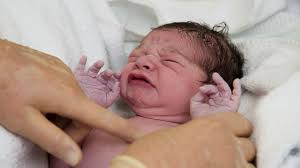Analysis of the Changing Role of Traditional Birth Attendants in Tirol West County, South Sudan

Abstract:
Effective from May 2014, community-based traditional birth attendants (TBAs)
in Yirol West County, South Sudan, were directed to start referring all women in
labour to health facilities for childbirth instead of assisting them in the villages.
This study aimed to understand the degree of integration of TBAs health system,
to reveal the factors influencing the integration, and to explore the perceived
solutions to the challenges faced by TBAs. A qualitative study utilising 11 focus
group discussions with TBAs, 6 focus group discussions with women, and 18 key informant
interviews with members of village health committees, staff of health facilities,
and staff of the County Health Department was conducted. Data were analysed using
qualitative content analysis. The study found that many TBAs were referring women
to health facilities for delivery, but some were still attending to deliveries at
home. Facilitators of the adoption of the new role by TBAs were: acceptance of the
new TBAs’ role by the community, women and TBAs, perceptions about institutional
childbirth and risks of home childbirth, personal commitment and motivation by some
communication problems between TBAs and health care facilities, delays in seeking
care by women, insecurity, lack of materials and supplies for TBAs, health system
constraints, insufficient incentives for long distances to health facilities and
transportation problems. This study has revealed encouraging developments in TBAs’
integration in the formal health system in Yirol West. However, there is need to
address the challenges faced by TBAs in assuming their new role in order to sustain
the integration.
Keyword: TBAs Health system, TBAs In South Sudan,
TBAs in Yirol, Focused antenatal care,
Care of uncomplicated delivery, Emergency Obstetric and Newborn Care (HemOnc), Focused
postnatal care.
References:
[2]. Byrne A, Morgan A: How the integration of traditional birth
attendants with formal health systems can increase skilled birth attendance. International journal of gynaecology and obstetrics:
the official organ of the International Federation of Gynaecology and Obstetrics
2011, 115(2):127-134.
[3].
Chen PC: Incorporating
the traditional birth attendant into the health team: the Malaysian example. Tropical and geographical medicine 1977,
29(2):192-196.
[4].
Gabrysch S,
Lema C, Bedrinana E, Bautista MA, Malca R, Campbell OM, Miranda JJ: Cultural adaptation
of birthing services in rural Ayacucho, Peru. Bulletin of the World Health Organization 2009, 87(9):724-729.
[5].
Groppi L, Somigliana
E, Pisani V, Ika M, Mabor JL, Akec HN, Nhial JA, Mading MS, Scanagatta C, Manenti
F et al: A hospital-centered approach
to improve emergency obstetric care in South Sudan. International journal of gynaecology and obstetrics: the official organ
of the International Federation of Gynaecology and Obstetrics 2015, 128(1):58-61.
[6].
Hossain J, Ross
SR: The effect of addressing demand for as well as supply of emergency obstetric
care in Dinajpur, Bangladesh. International
journal of gynaecology and obstetrics: the official organ of the International Federation
of Gynaecology and Obstetrics 2006, 92(3):320-328.
[7].
Jokhio AH, Winter
HR, Cheng KK: An intervention involving traditional birth attendants and perinatal
and maternal mortality in Pakistan. The New
England journal of medicine 2005, 352(20):2091-2099.
[8].
Kelly J, Kohls
E, Poovan P, Schiffer R, Redito A, Winter H, MacArthur C: The role of a maternity
waiting area (MWA) in reducing maternal mortality and stillbirths in high-risk women
in rural Ethiopia. BJOG : an international
journal of obstetrics and gynaecology 2010, 117(11):1377-1383.
[9].
Kruske S, Barclay
L: Effect of shifting policies on traditional birth attendant training. Journal of midwifery & women's health 2004,
49(4):306-311.
[10]. Ministry of Health Government of Southern Sudan: Southern
Sudan Household Survey 2006. Juba: MoH/GOSS; 2006.
[11]. Making pregnancy safer: The critical role of the skilled
attendant. A joint statement by WHO,ICMandFIGO [http://www.who.int/maternal_child_adolescent/documents/9241591692/en/]
[12]. Progress Report - Reproductive health strategy to accelerate
progress towards the attainment of international development goals and targets [http://www.who.int/reproductivehealth/publications/general/rhr_10_14/en/]
[13]. Sibley LM, Sipe TA, Brown CM, Diallo MM, McNatt K, Habarta
N: Traditional birth attendant training for improving health behaviours and pregnancy
outcomes. The Cochrane database of systematic
reviews 2007(3):CD005460.
[14]. United Nations: The Millennium Development Goals Report 2015.
New York, USA: United Nations; 2015.
[15]. Yadav H: Utilization of traditional birth attendants in MCH care in rural Malaysia. Singapore medical journal 1987, 28(6):520-525.

